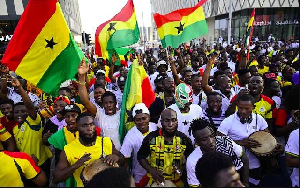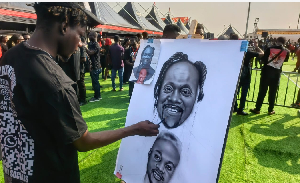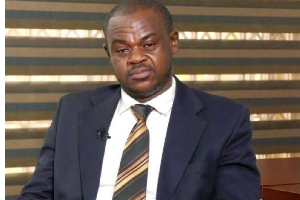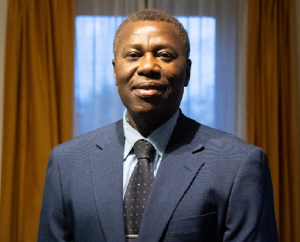(A GNA Feature by Mohammed Nurudeen Issahaq)
Bolgatanga, Dec.19, GNA - The silence political parties have fallen into since the declaration of the results of the December 7 general election can be likened to the quiet before the storm. For now it is obvious that the two contending parties, the National Democratic Congress (NDC) and the New Patriotic Party (NPP) have both gone back to the drawing board and are mapping out strategies towards the runoff of the Presidential race scheduled for 28th December 2008.
It is expected that any moment from now, political campaigning would resume with full swing once more, with activists/functionaries of the NPP and NDC criss-crossing the length and breadth of the country to court the support of voters. A look at the performances of the two contestants in the December 7 Presidential poll in the Upper East Region would be useful, as it would probably assist the contending parties to plan their strategies for the Region towards the 28th December runoff.
Some statistics of the 2004 Presidential poll in the Region are also provided for the sake of comparative analysis where necessary. For purposes of focus, this write-up does not include the other six parties whose candidates participated in the Presidential race of December 7, the reason being that those parties would not feature in the impending runoff.
Figures obtained from the Upper East Regional Directorate of the Electoral Commission (EC) put the total number of registered voters for this year's general election at 529,877. The number represents the electorate in all the Region's 13 constituencies, and exceeds the total registered voters, who took part in the 2004 elections in the Region (425,756) by 104,121 persons.
In the December 7 polls, 188,405 voters in the Upper East Region cast their ballots for the NDC in the Presidential race, while 118,454 persons cast their ballots for the NPP. The difference between the number of voters for the NDC and that of the NPP in the presidential poll as far as the Upper East Region goes, stands at 69,951. Rejected ballots in the Region were 13,268 in the presidential election, which almost equals the total number of registered voters for Builsa South constituency (15,664).
A deeper look reveals that Bolgatanga with 73,299 and Bawku with 56,996 hold a substantial 130,295 registered voters out of the regional total of 529,877. In the two 'vote banks' the NPP beat the NDC in the Bawku Central Constituency, polling 19,933 as against 18,943 votes by its opponent. In Bolgatanga central, however, the NDC gained 30,941 votes compared to 13,554 by the NPP, a difference of 17,387 votes. This, to a large extent, has accounted for the NDC's long lead over the NPP in the Presidential race in the Region.
Of course, that is not to say that the other constituencies in the Region do not matter. Garu-Tempane for instance, holds 51,624 voters, which is quite close to that of Bawku Central. Nabdam constituency has 47,604, while Zebilla has 44,261 registered voters. Together, these three constituencies account for 143,489 registered voters, representing about 29 per cent of the regional total. Interestingly, the NDC took all the above-mentioned three constituencies in the December 7 Presidential poll, scoring 19,477 in Garu, 5,501 in Nabdam, and 18,681 in Zebilla, as against 12,564; 4,655 and 9,337 votes in that order for the NPP.
It can be argued from the foregoing, therefore, that these five constituencies hold the key to any election victory in the Upper East Region. Narrowed down further, Bolgatanga and Bawku Central constitute the Region's major battle grounds in the 28th December Presidential runoff. Any of the two contending parties that would be able to capture those constituencies stands a better chance of conquering the Upper East Region in the crucial election of December 28, 2008.
Politics of Friday, 19 December 2008
Source: GNA












